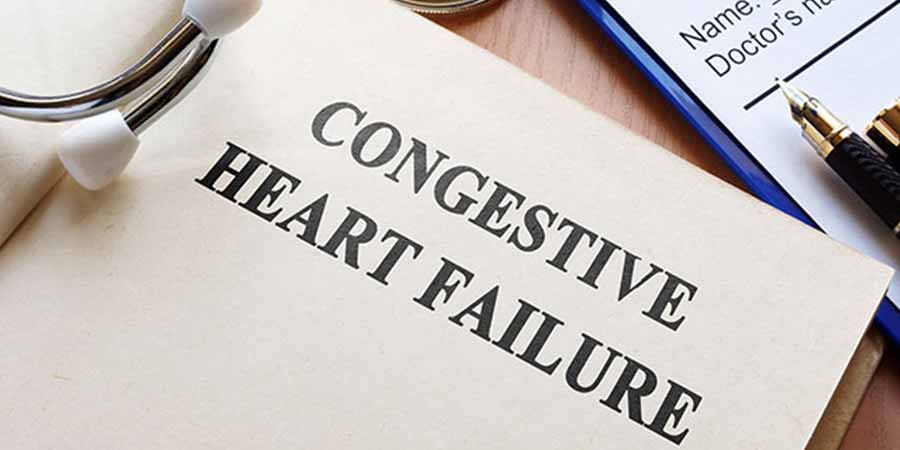What You Need to Know to Keep Your Patients Safe!
Worldwide, there are an estimated 26 million people affected by congestive heart failure. Other terms for congestive heart failure (CHF) include cardiac failure or simply heart failure. This syndrome has reached epidemic proportions, especially in locations with many Baby Boomers, such as in the United States, and is one of the leading causes of hospitalization for patients 65 and older. Fifty percent of patients die within five years after they have been diagnosed.
What Is Congestive Heart Failure?

Congestive heart failure is described as a condition in which the heart is not able to pump enough blood through the body to supply all organs with oxygen and nutrients. Acute CHF can be caused by an insult such as a heart attack, while chronic CHF may be due to the natural weakening of the heart due to aging in which the heart will pump less and less blood over time. Other organs may also become affected.
Heart failure can occur on either side of the heart, and eventually both sides of the heart will be affected and fail. The different classifications for heart failure include:
- Systolic. The ventricles are weakened and cannot pump enough blood, resulting in heart failure with reduced ejection fraction.
- Diastolic. The ventricles are not able to fill properly with blood, decreasing cardiac output.
- Right-sided. The compromised functioning of either the right ventricle or atrium commonly leads to elevated systemic venous pressure and abdominal edema, primarly affecting the liver but also the stomach and intestines.
- Left-sided. This is the most common type of heart failure. The compromised functioning of the left ventricle and atrium leads to both decreased cardiac output and lung congestion.
What Are the Causes of Heart Failure?
Heart failure is often caused by a heart attack, coronary artery disease, natural aging, or any other condition which damages the heart muscle. Generally, high blood pressure and diabetes are also seen in heart failure patients.
What Are Congestive Heart Failure Symptoms?
Depending on which side of the heart is involved, the patient will exhibit different signs and symptoms of heart failure.
Signs and symptoms of right-sided HF include: loss of appetite, nausea, vomiting, peripheral edema, jugular vein dissension, elevated central venous or right atrial pressure, and more.
Signs and symptoms of left-sided HF include: cough, fatigue, crackling lung, elevated pulmonary capillary occlusion pressure, dyspnea/orthopnea, tachycardia, and more.
Worldwide, there are an estimated 26 million people affected by congestive heart failure. This syndrome has reached epidemic proportions, especially in locations with many Baby Boomers, such as in the United States.
What Are the Main Risks for Heart Failure?
There are various risk factors for heart failure. Some—such as smoking and being overweight—can be reduced through proper nutrition, exercise, and programs to help in overcoming addictive behaviors. Eliminating these preventable risks can dramatically minimize the risk for heart failure and/or prevent worsening of the symptoms.
Other risk factors that cannot be prevented or lessened include being over 65 years of age and being genetically prone to heart failure. The disease affects more women than men.
How Is Heart Failure Diagnosed?

Heart failure is diagnosed based on symptoms and verified by diagnostic tests to confirm. An electrocardiogram, chest X-ray, and treadmill stress test are utilized by clinicians to assess a patient’s heart.
The most definitive lab test for heart failure is to measure the level of the neurohormone B-type natriuretic peptide (BNP). This test helps to confirm a diagnosis of heart failure and establish its severity. Other diagnostic tests are done to determine the severity of complications and coexisting conditions.
Which Comorbities Are Common to Heart Failure?
Several other serious conditions are commonly found alongside heart failure, both as possible causes and complications.
These include:
- Heart attack (myocardial infarction)
- High blood pressure (hypertension)
- Diabetes
- Kidney failure
- Metabolic syndrome
- COPD
- Asthma
Can Heart Failure Be Treated?

Heart failure can be treated, but it cannot be cured. The main goals of treatment are to manage the symptoms and to prevent worsening and/or advancement of the condition.
Heart failure is treated by medications, surgical procedures, or the implantation of devices designed to support the heart that is failing, occasionally as a bridge-to-transplant. HF patients are usually on cardiac monitors when they are in an acute care hospital, necessitating their residence in an intensive care unit, a step-down critical care unit, or a telemetry unit if they are ambulatory.
The treatment of heart failure is multifaceted and includes:
- Prescription medications to enhance heart function, thus improving many symptoms and preventing hospital readmissions.
- Surgical procedures including defibrillators, heart valve replacement, heart transplants, implants, and more.
- Supportive devices to treat symptoms and improve quality of life.
- Nutritional therapy to support an ideal weight and prevent further complications.
Clinical care for the heart failure patient is a collaborative, multidisciplinary approach that includes physicians, nurses, occupational therapists, respiratory therapists, physical therapists, dietitians, and more, together with family caregivers, to achieve the best patient outcome and to prevent worsening of symptoms.
Want to deepen your knowledge about “Clinical Care for the Heart Failure Patient” while earning 5 contact hours of continuing education? Take our online course now. ANCC-accredited and AOTA-approved provider.
Sign up for our newsletter email list and like us on Facebook and Instagram to be among the first to know about all our special discounts and offers!
About Wild Iris Medical Education:
Wild Iris Medical Education, Inc., is a privately held, woman-owned company providing online healthcare continuing education. In 1998, we began offering online ANCC-accredited nursing continuing education courses and since then have expanded to provide CEUs for occupational therapists, physical therapists, paramedics, EMTs, and other healthcare professionals.
Accredited and Approved Nationwide.
High-quality CEU Courses since 1998.

Join Our More Than 750,000 Satisfied Customers Now!
High-quality, accredited, evidenced-based continuing education courses in an easy-to-use format designed for learning, from Wild Iris Medical Education. We’ve been providing online CE since 1998.



